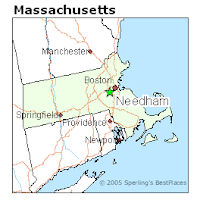The theme for this week is to blog about someone who is on the 1880 Census Schedule of Defective, Dependent or Delinquent Individuals. I do not have anyone on that Schedule, but that reminded me of my great, great aunt, Charlotta Ludlow Willey. Had her problems occurred earlier, she might have been on that Schedule.
Lottie, as she was known, was the sister of my great, great grandmother, Jennie Sophia Willey. Lottie was born in 1852 in Kankakee, Kankakee, Illinois to Samuel G. and Ann (Reed) Willey. Her sister married John Wesley Hannah in 1866. Sometime before 1870 Lottie moved to Butler, Missouri and lived with her sister and her brother-in-law. She continued to live with them as she is listed with them not only in the 1870 census, but also in the 1880 census.
It appears that Lottie was an accepted resident of the town of Butler. The Library of Congress Historic Newspaper Collection, which is on line, has the newspaper for Butler. I searched it for Lottie and found three articles. I was interested to see that they spelled her last name as Willie, rather than Willey. The first article from 1881 indicates that Lottie will be with her sister in Butler for the winter. I was interested in the statement about her accomplishments and would love to know what they were.
The second article simply mentions Lottie as a guest at a wedding along with her sister and brother-in-law.
The last one is from 1889, when Lottie has taken her two nieces, Tim and Toots Hannah, to visit relatives in Illinois. What I find interesting is that her sister, Jennie died in 1887. That makes me wonder if Lottie remained in Butler to help her brother-in-law raise his children.
So far, Lottie is looking like a stable, healthy person who is part of a family and accepted in her local community. When I tried to find her in the 1900 census, she was not with her nieces and nephews, who had moved to Auburn, New York, after the death of their father. Rather, she was now a resident
 |
| State Hospital #3 |
of Nevada State Hospital #3 Washington Township, Vernon County, Missouri. According to the Vernon County U.S. Genweb, “The Hospital, which was sometimes referred to as the Lunatic Asylum, in Nevada, Vernon County, Missouri, treated a wide variety of illnesses and conditions over the years it was in operation: mental disease, tuberculosis, syphilis, senility, epilepsy, etc.”
Unfortunately, neither the census records, her death certificate nor her medical records indicate why Lottie was hospitalized. However, her medical records do indicate that she was committed to the hospital on July 7, 1891 by her brother-in-law, John Wesley Hannah. Lottie remained in that hospital until her death on August 26, 1926. Lottie is buried in the Hannah plot in Oak Hill Cemetery in Butler, Missouri.
I have lots of questions for Lottie, if I were able to talk to her. I would ask: Why she moved to Butler to live with her sister? If after her sister died, did she stayed to take care of her sister’s family? Why was she hospitalized? What was her life like in the hospital? I would also like to know who paid for her burial?

















































